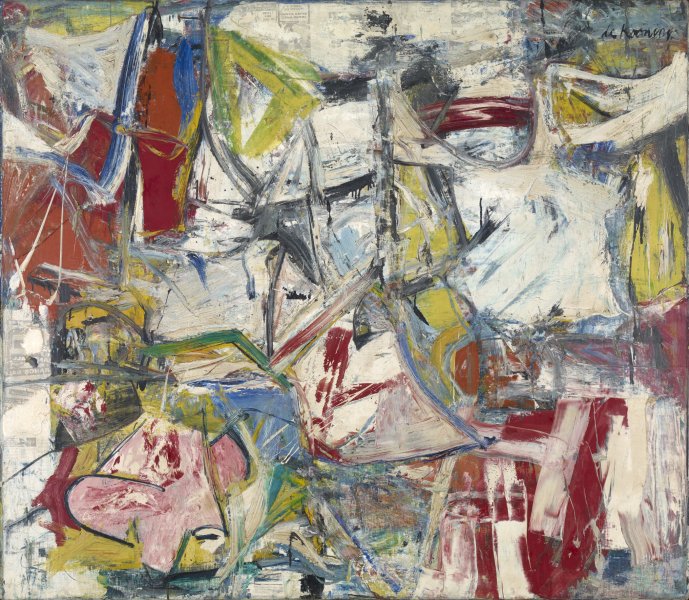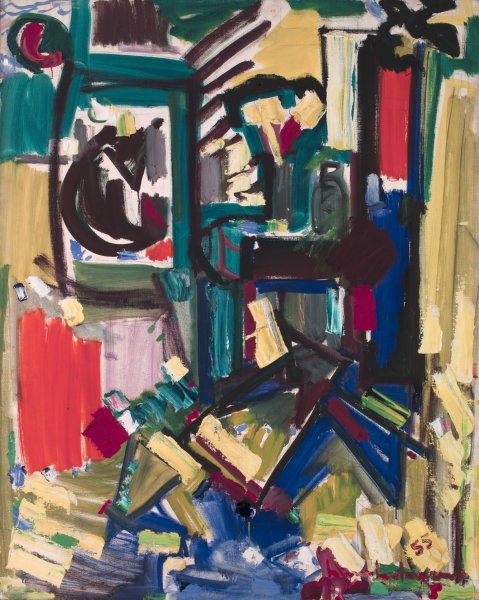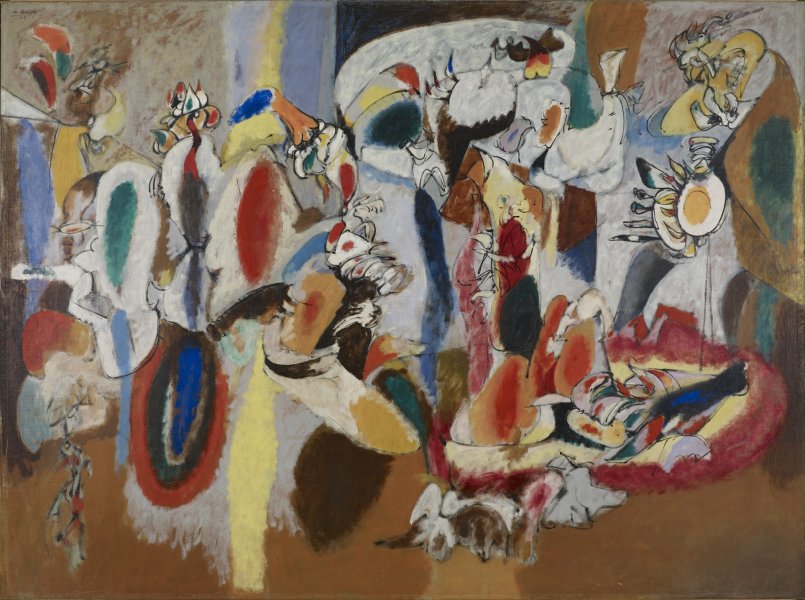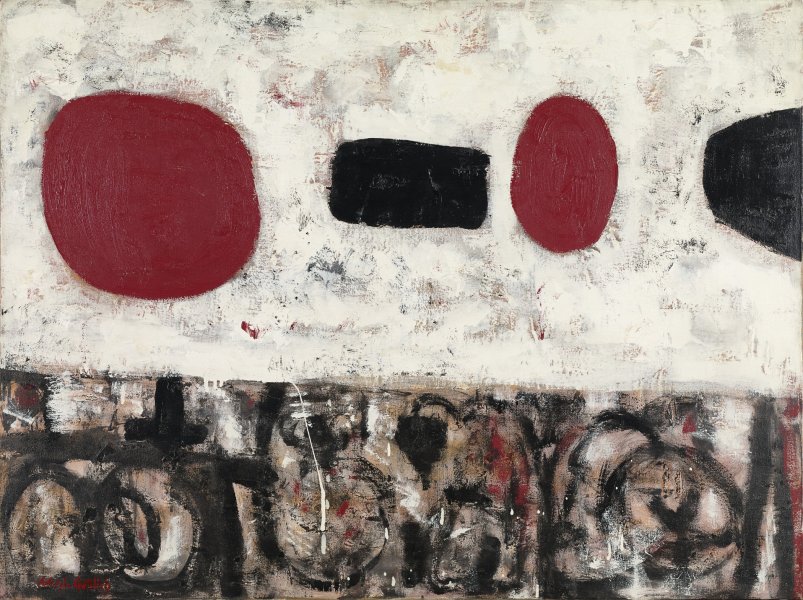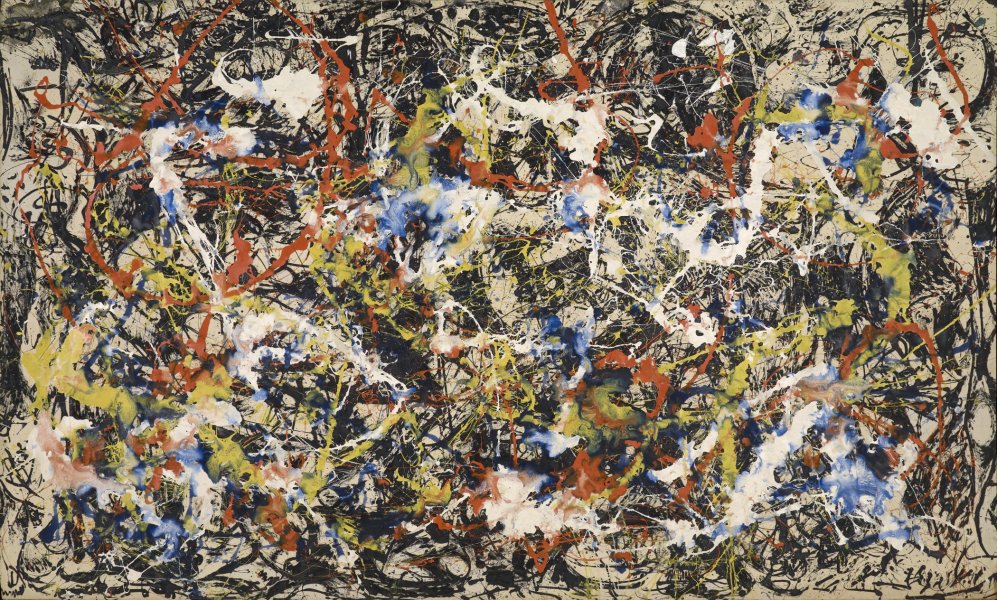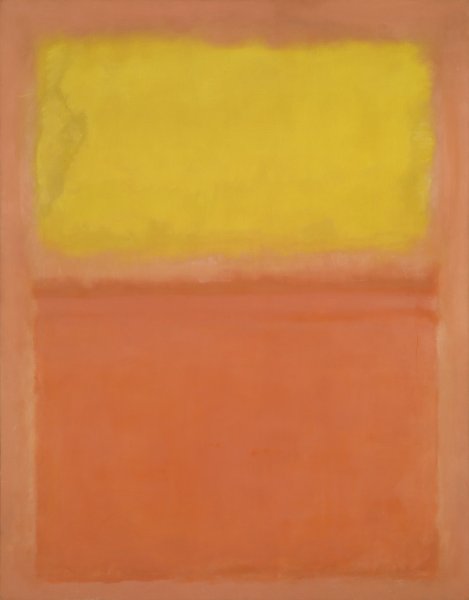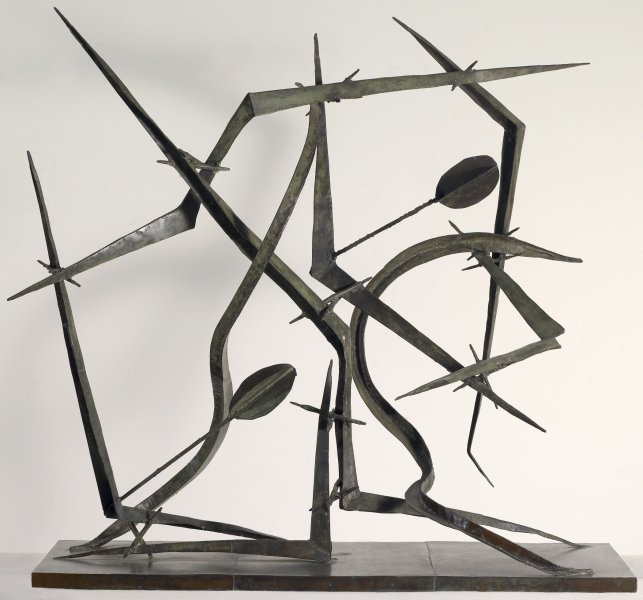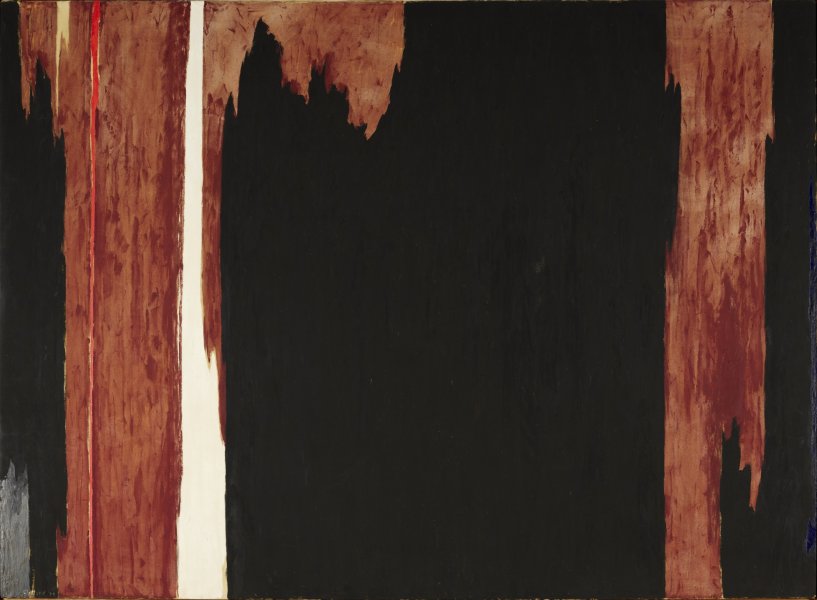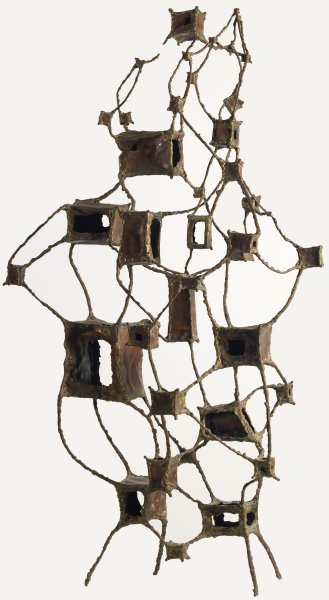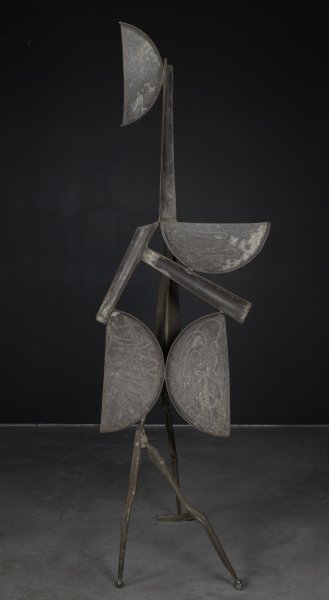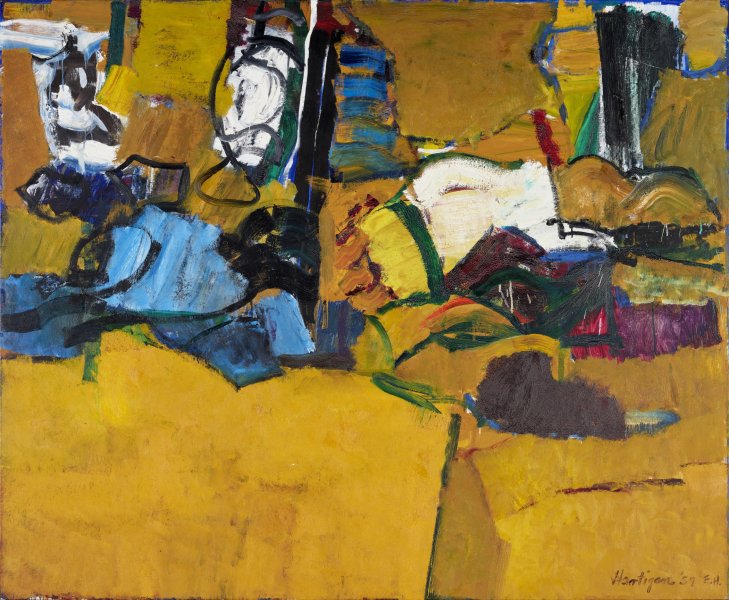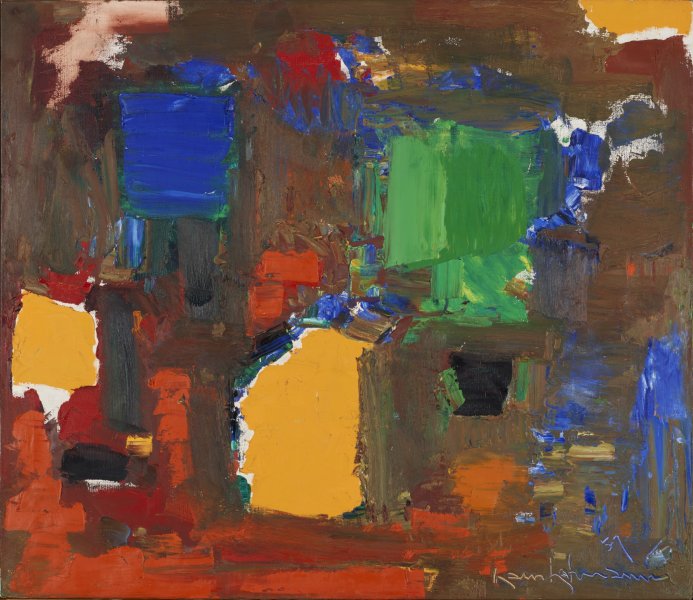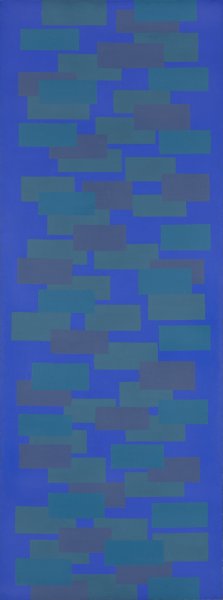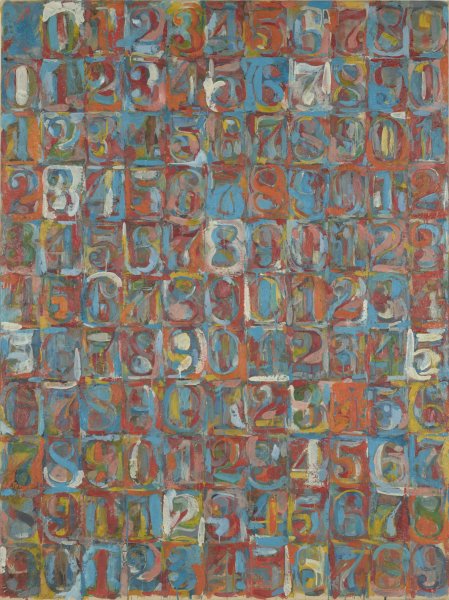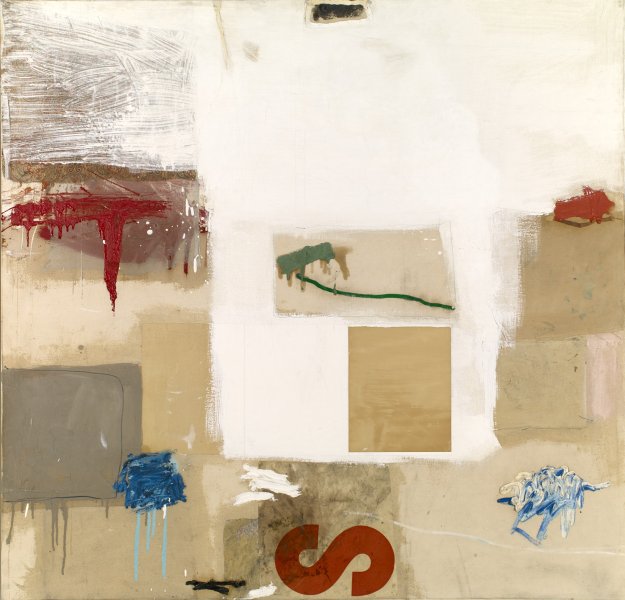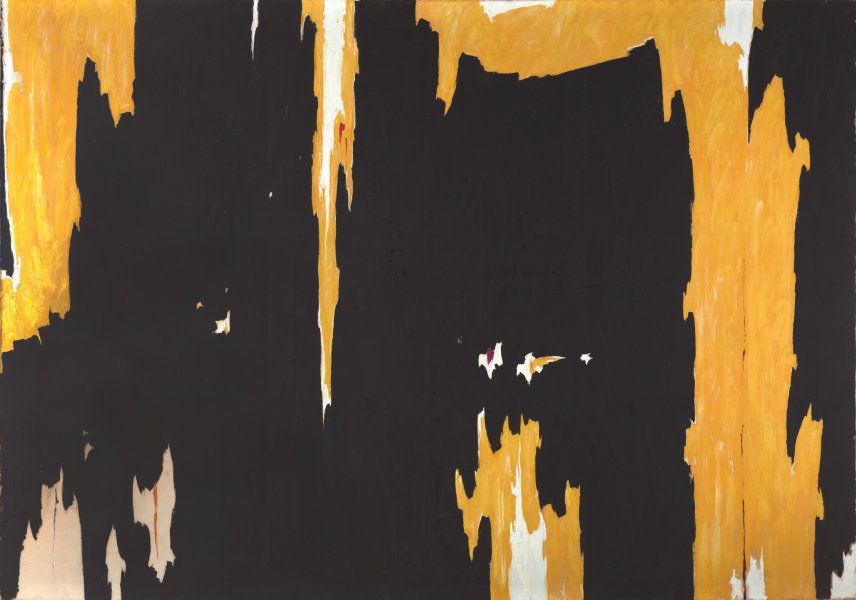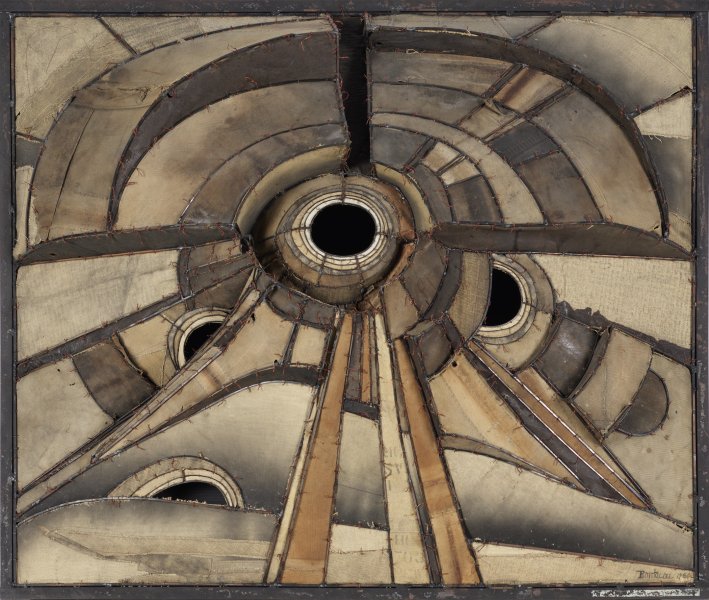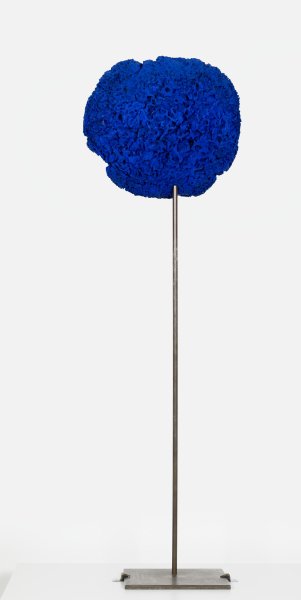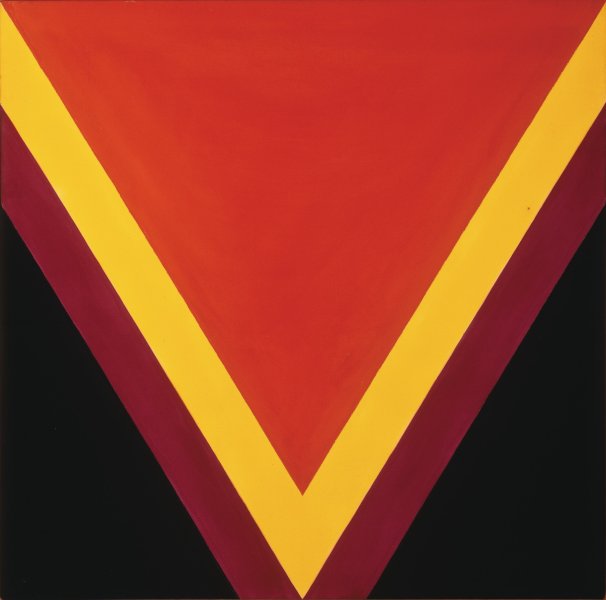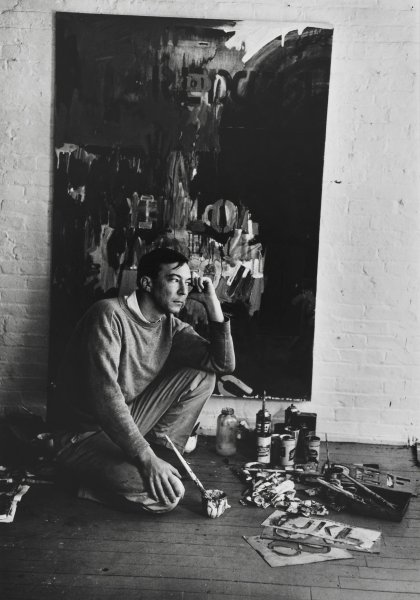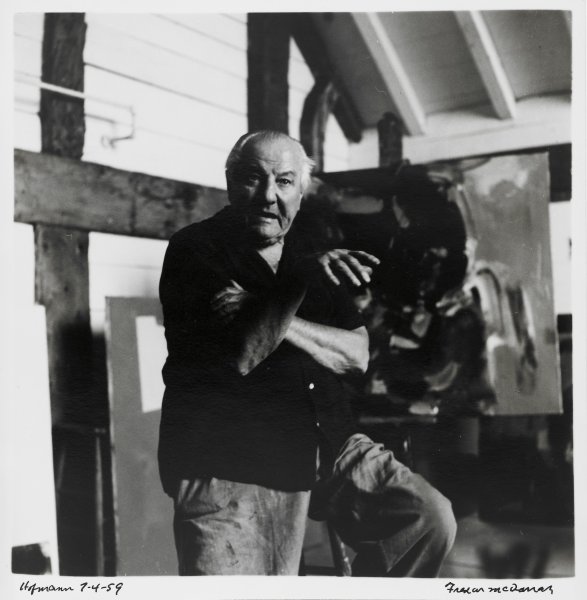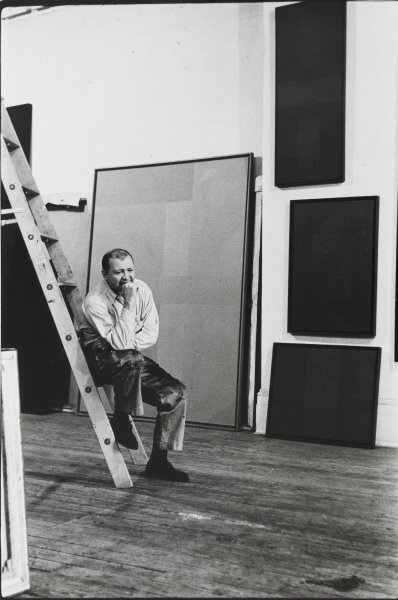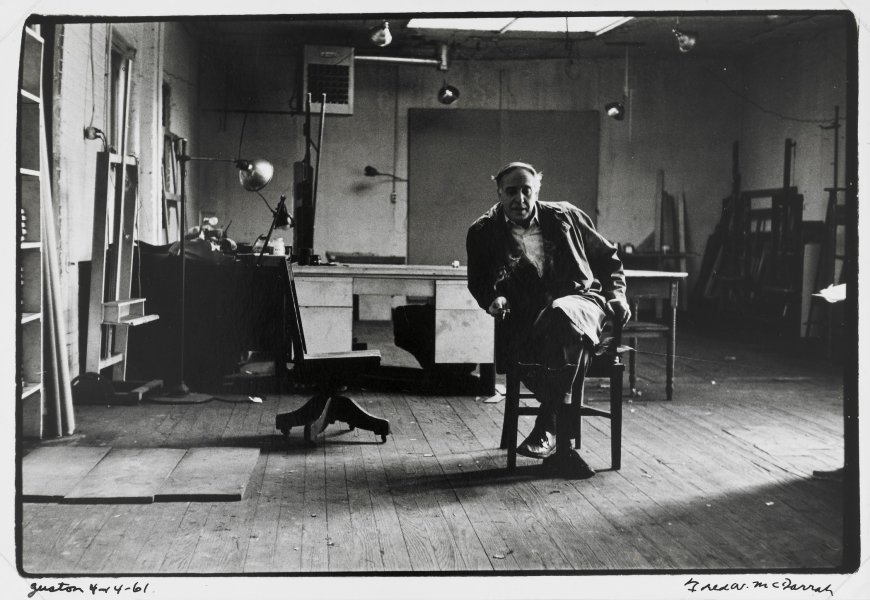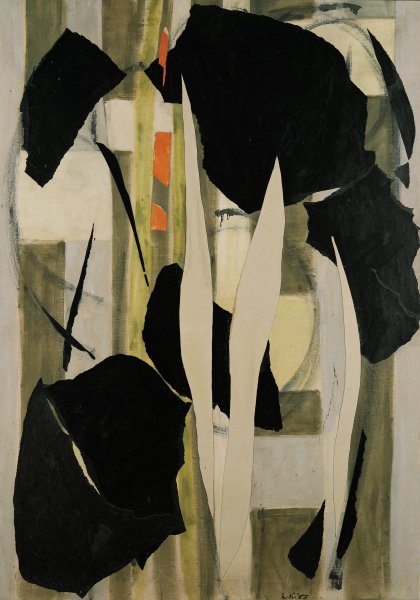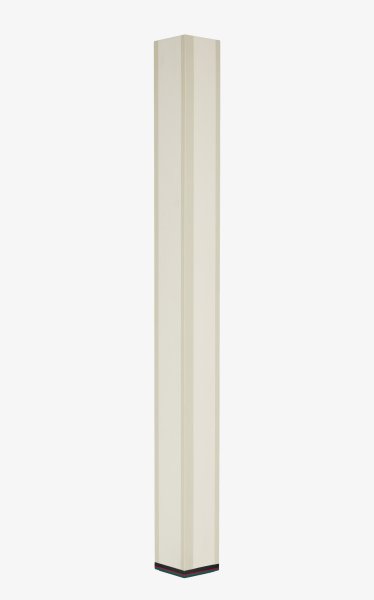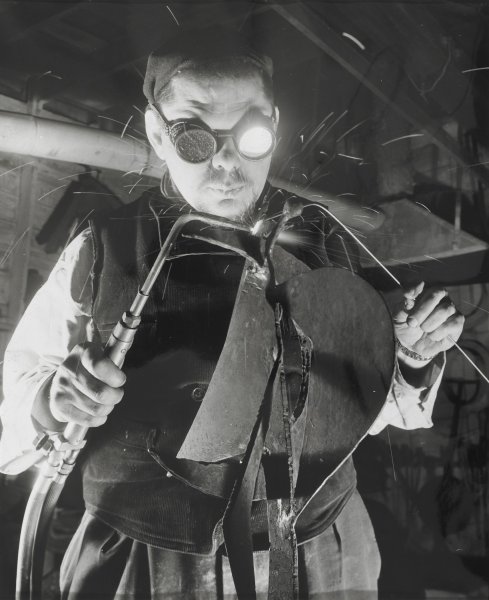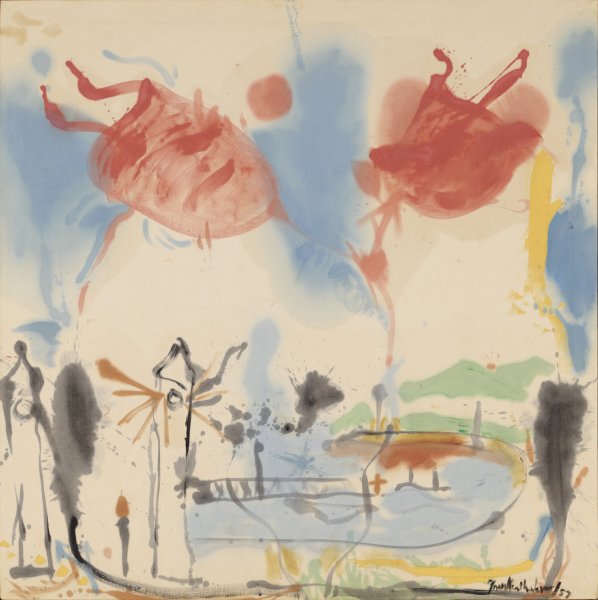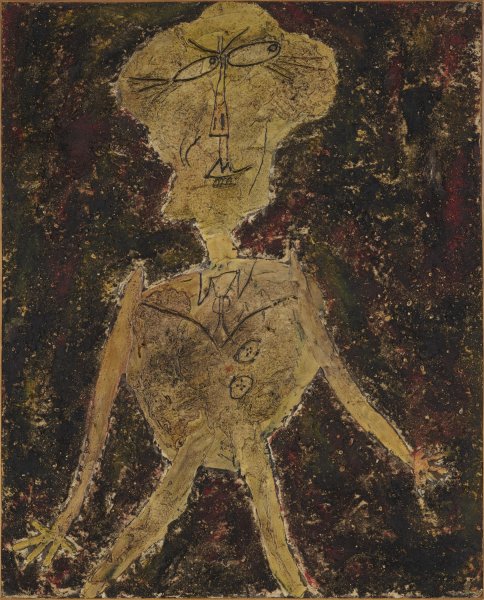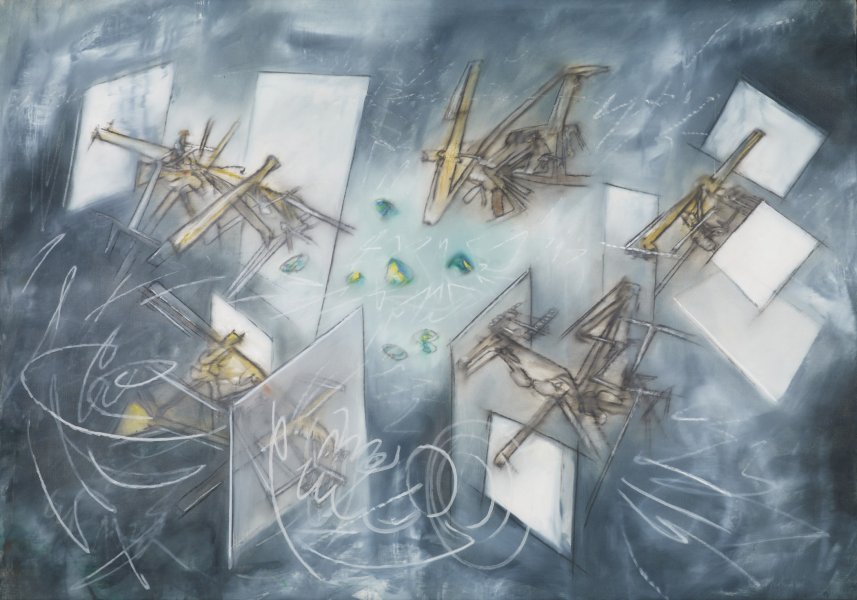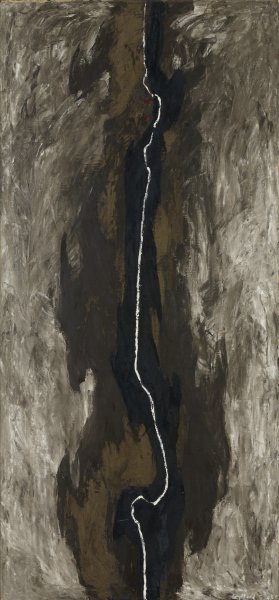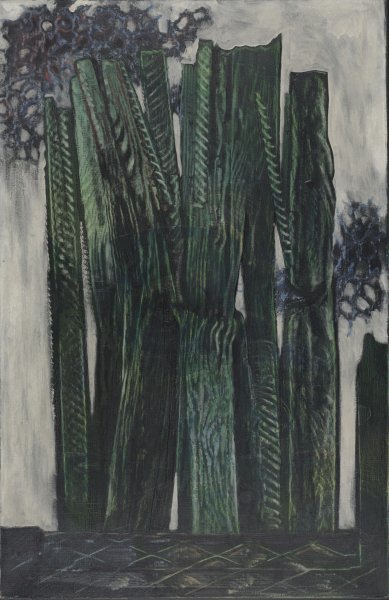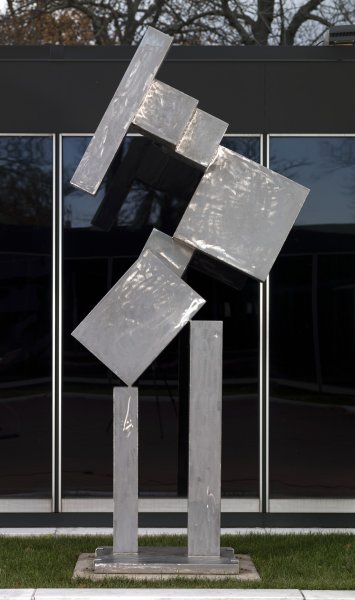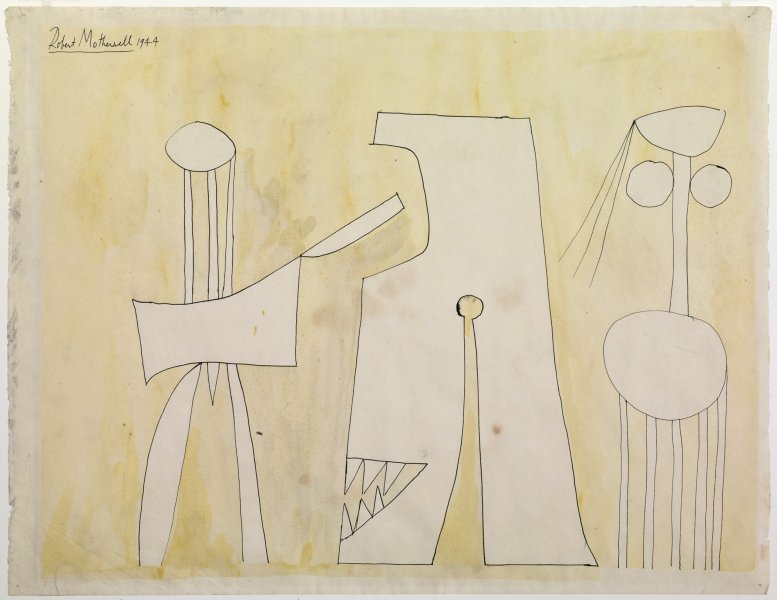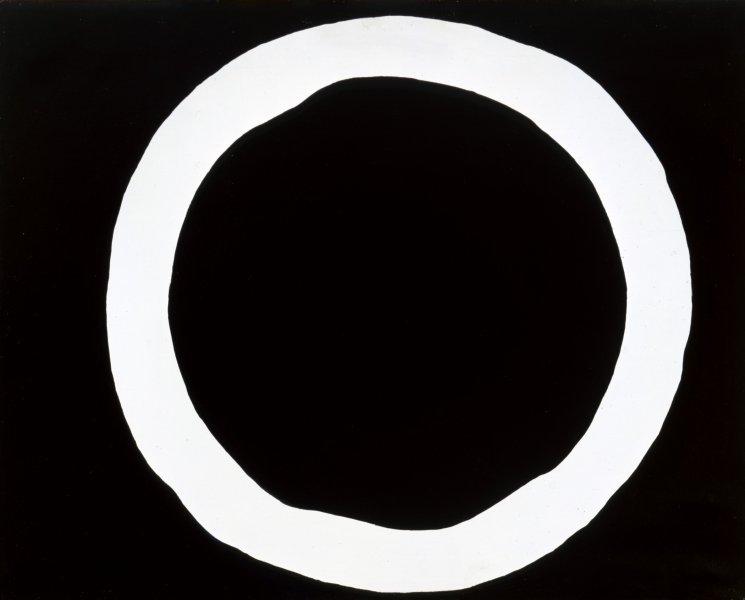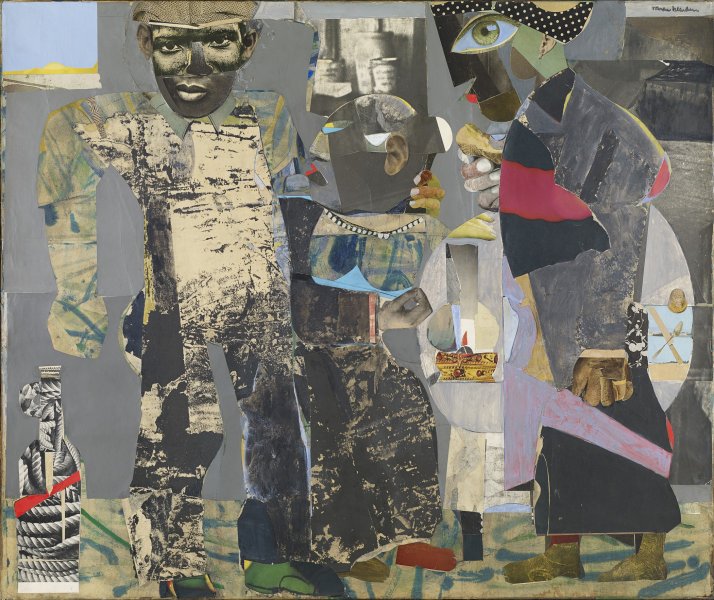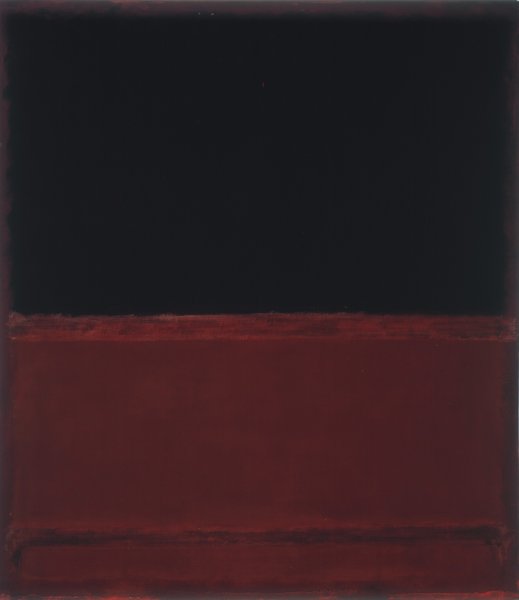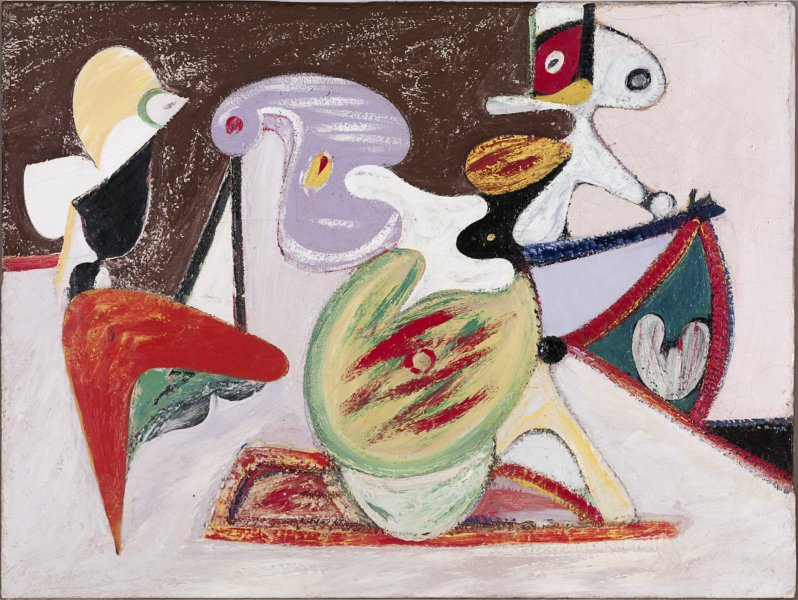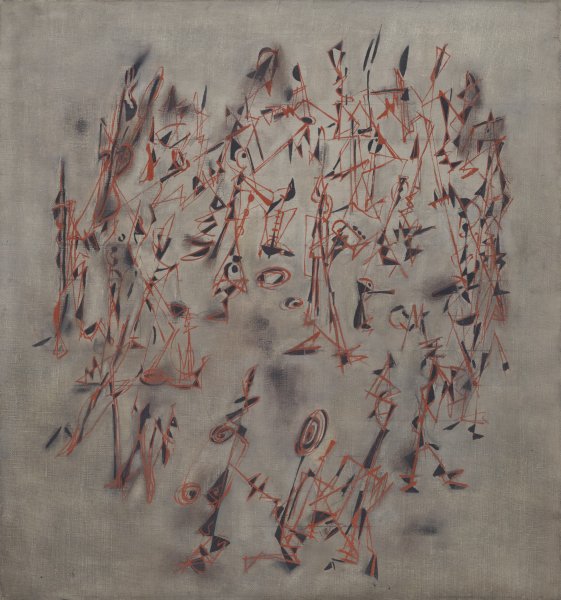Action/Abstraction: Pollock, de Kooning, and American Art, 1940–1976
Friday, February 13, 2009–Sunday, June 14, 2009
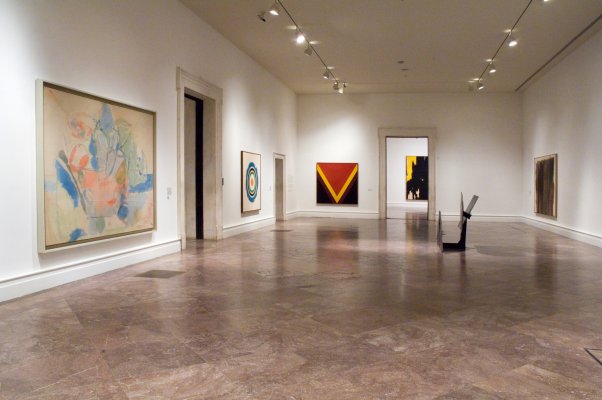
Installation view of Action/Abstraction: Pollock, de Kooning and American Art, 1940–1976. Photograph by Tom Loonan.
1905 Building
Organized by the Albright-Knox in collaboration with The Jewish Museum, New York, and the Saint Louis Art Museum, this special exhibition revisited the watershed period of American art from 1940 to 1976 through the writings of its two primary critics: Harold Rosenberg and Clement Greenberg.
In a period fueled by Cold War politics, the mushrooming of mass media, and surging consumerism, Rosenberg promoted action—his idea of the creative, physical act of making art—against Greenberg’s belief in abstraction and the formal purity of the art object. The artists they championed included Jackson Pollock and Willem de Kooning, Hans Hofmann and Arshile Gorky, Helen Frankenthaler and Joan Mitchell, Jules Olitski and Philip Guston, Mark Rothko and Clyfford Still. Action/Abstraction presents key paintings and sculptures from this decisive era, surveying the first generation of Abstract Expressionists as well as later artists who built on their achievements.
Context rooms in the exhibition featured objects and moving images—including personal correspondence, publications, film clips, and photographs—that shed light on the cultural and social climate of the 1940s through the 1970s. An additional installation of ephemera drawn from the Albright-Knox’s rich archives documented the museum’s institutional history with the movement. The works in the exhibition, arranged in thematic sections, were grouped to evoke the rivalry of Greenberg and Rosenberg and the epic transformation of American art in the postwar period.
The exhibition was organized by The Jewish Museum, New York, in collaboration with the Albright-Knox Art Gallery, Buffalo, and the Saint Louis Art Museum.
Exhibition Sponsors
Leadership support was provided by the Weissman Family Foundation, The National Endowment for the Humanities, a federal agency, and the Peter Jay Sharp Foundation.
The exhibition was sponsored by the Jerome L. Greene Foundation.
The exhibition was made possible in Western New York through the generous support of M&T Bank; the late Judge John T. Elfvin and Peggy Pierce Elfvin; the Seymour H. Knox Foundation; The John R. Oishei Foundation; the Margaret L. Wendt Foundation; the New York Council for the Humanities, a state affiliate of the National Endowment for the Humanities; Deborah Ronnen; and Sotheby’s.
The media sponsor for the exhibition was WNED.
Any views, findings, conclusions, or recommendations expressed in this exhibition do not necessarily represent those of the New York Council for the Humanities or the National Endowment for the Humanities.
Leadership support was provided by the Weissman Family Foundation, The National Endowment for the Humanities, a federal agency, and the Peter Jay Sharp Foundation.
The exhibition was sponsored by the Jerome L. Greene Foundation.
The exhibition was made possible in Western New York through the generous support of M&T Bank; the late Judge John T. Elfvin and Peggy Pierce Elfvin; the Seymour H. Knox Foundation; The John R. Oishei Foundation; the Margaret L. Wendt Foundation; the New York Council for the Humanities, a state affiliate of the National Endowment for the Humanities; Deborah Ronnen; and Sotheby’s.
The media sponsor for the exhibition was WNED.
Any views, findings, conclusions, or recommendations expressed in this exhibition do not necessarily represent those of the New York Council for the Humanities or the National Endowment for the Humanities.
